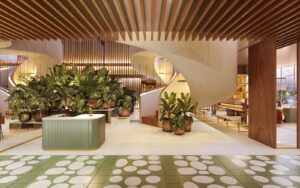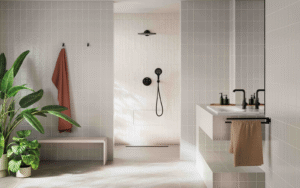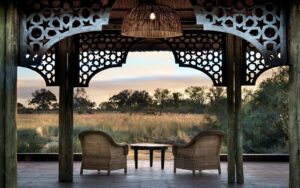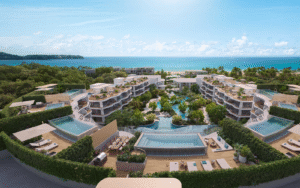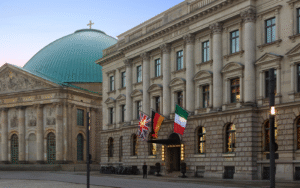Richard Holland, Director and Co-Founder of Holland Harvey Architects, joins Editor Hamish Kilburn to discuss sustainability in materials for the first episode to drop in series four of DESIGN POD…
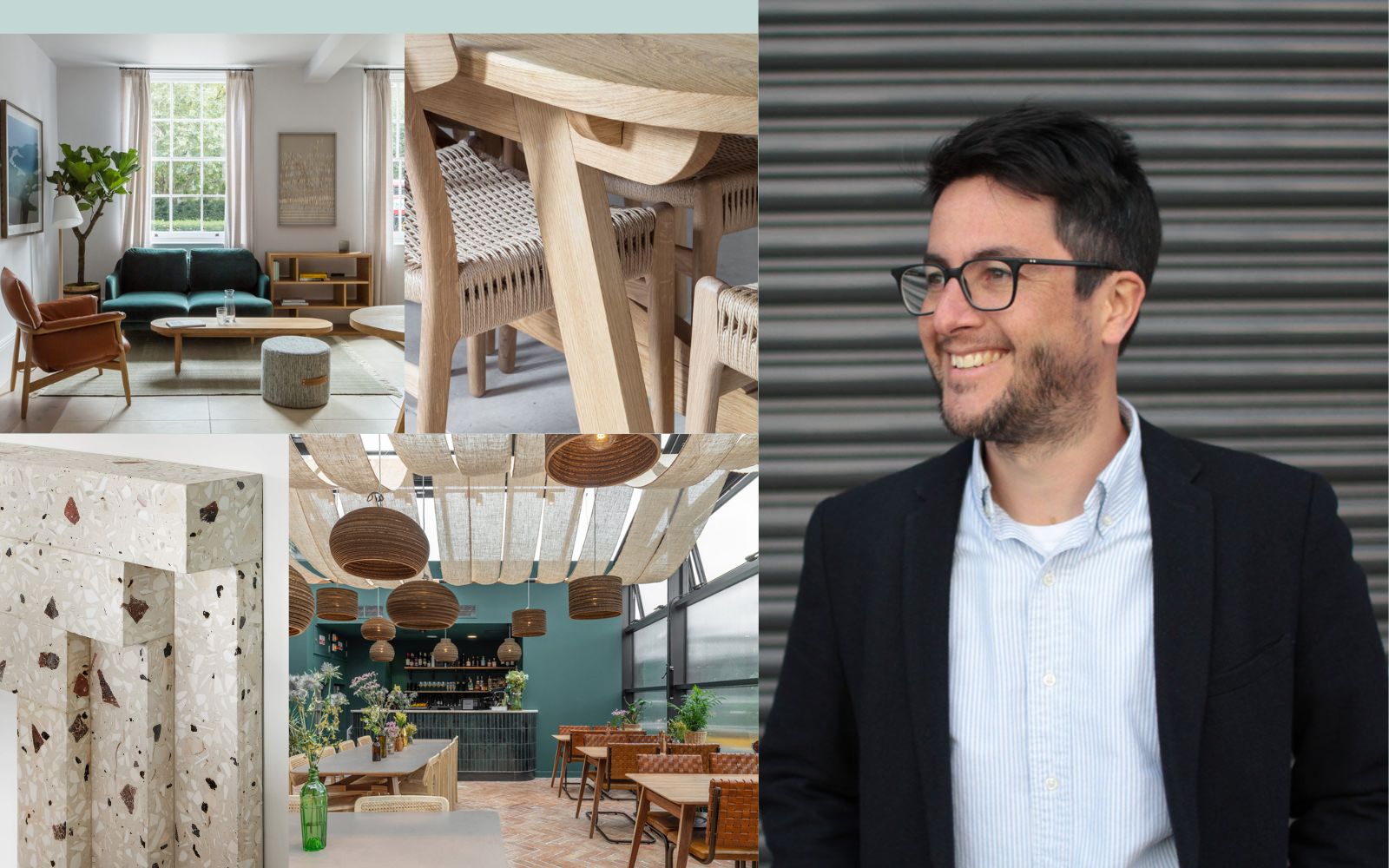
The mantra of DESIGN POD series four, sponsored by Geberit and produced by Mel Yates, is to unapologetically ‘cut through the noise’ in design and architecture, while continuing to create conversations that are unlike any other. The topics that will be amplified across eight meaningful episodes will include nature in design, circadian lighting, design in the metaverse and unconventional design narratives. However, while all these themes are prevalent on today’s landscape, there is, arguably, no conversation that is louder in 2023 – and that is causing more confusion in its definition alone – than that around sustainability in materials.
In recent years, though, following the rise in demand for more environmentally and socially driven buildings and spaces, design and architecture studios, like Holland Harvey Architects, that were born from the idea of conscious design and development have finally started to win projects that will set new standards in sustainability. For Richard Holland, Co-Founder and Director of Holland Harvey Architects, that initial hotel project came in the form of Inhabit Hotels, which today comprises of two urban wellness hotels in west London that have been designed to make both and environmental and social impact on their communities.
In episode 27 of DESIGN POD (the first episode in series four), I welcomed Holland on the podcast to explore the significance of working with hospitality brands that truly understand the value in developing around communities and being environmentally aware throughout – not just using sustainability as a veneer. Nadira and Rihim Lalji, the owners of InHabit Hotels, created the small yet mighty hotel brand around social connectedness, intellectual expansion and environmental responsibility – all of which were qualities that form the foundations of Holland Harvey Architects to ‘free architecture’. This mindset from the client allowed the design team to, well, design deeper by applying research and finding unconventional ways to retain materials existing buildings, while not taking anything away from the contemporary Scandinavian-meets-British design aesthetic, created by Caitlin Henderson Design.
What sets Inhabit Hotels aside from others is its commitment to save and restore in both design and architecture, confronting the notion that listed buildings can’t be sustainable. “The first hotel for Inhabit was in six Georgian townhouses, and it was a bit of a labyrinth when we took on the site,” Holland says on the podcast. “The Georgian’s knew how to design beautifully proportioned buildings, and a lot of our work was to reinstate that. We asked things like whether we could take the ceiling up to expose these beautiful sash windows and how we could reinstate the sense of rooms.”
In addition to the project being environmentally aware, the design scheme was also created to enhance social interaction, and make the space feel more home-from-home. “Having an open kitchen, for example, created the opportunity to have a communal table, which becomes a hard-working and multi-functional space,” Holland adds. “That gave it that all-day vibe.”
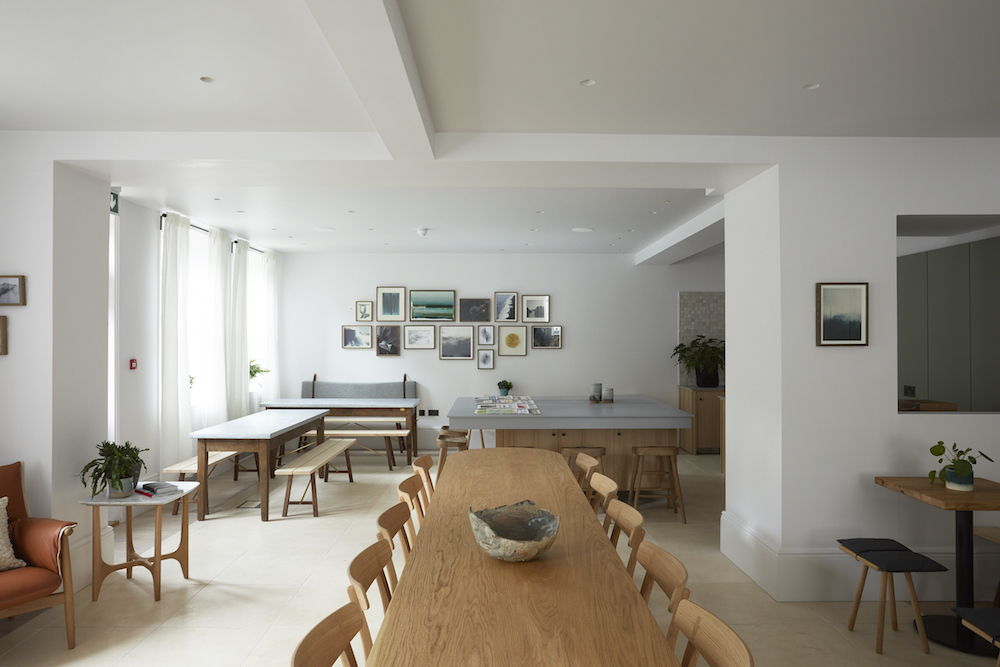
Image credit: Inhabit Hotel
“Sometimes people fall on technology as a replacement for nature. And actually, it is already there for free.” – Richard Holland, Co-Founder and Director of Holland Harvey Architects, speaking on DESIGN POD.
In terms of materiality, there is no greater example among the architect’s portfolio than what is sheltered inside Inhabit Queen’s Gardens, which was the second hotel to open under the Inhabit brand. One such material that has gone on to define the design narrative is Granby Rock, a custom-made terrazzo produced by Granby Workshop using marble from the original site, which today forms a centrepiece fireplace in the reception. “We are not so naive to suggest that by designing one fireplace we are going to save the world,” comments Holland. “But it is an amazing showcase of what that organisation can do.”
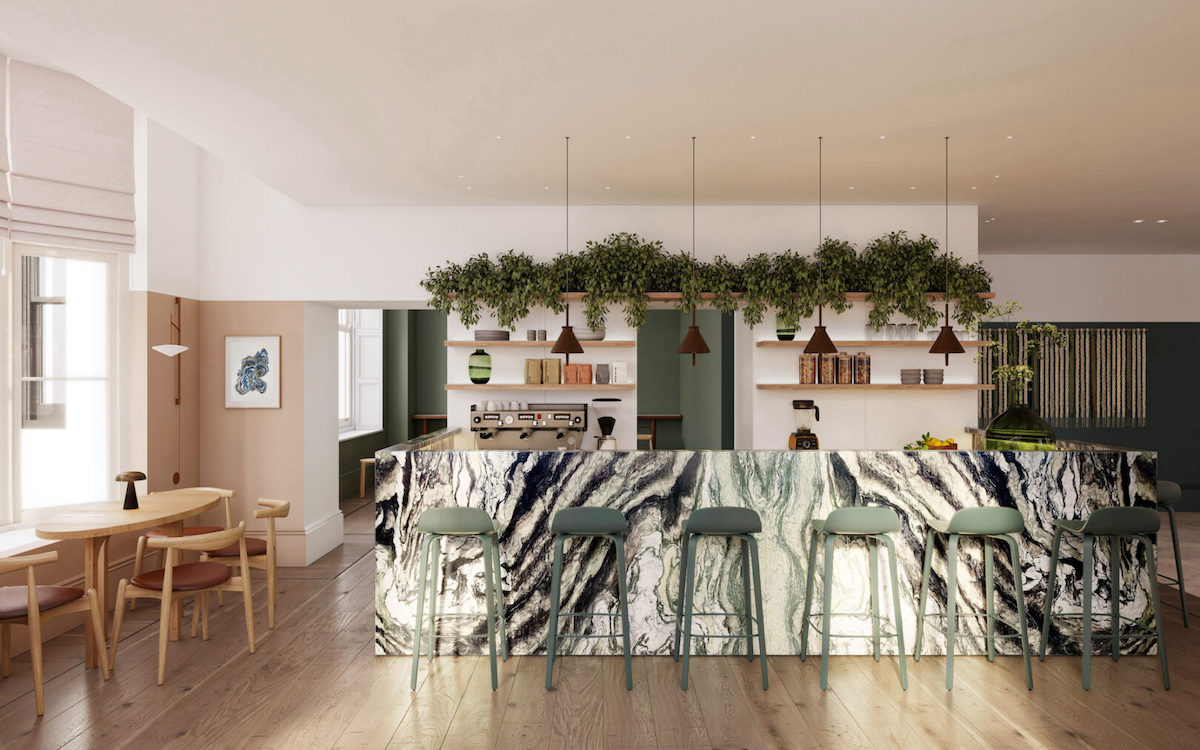
Image credit: Inhabit Hotels
Outside of the hotel arena, Holland Harvey Architects recently completed a project for Shelter From The Storm (SFTS), a London-based homeless shelter that provides 42 beds, fresh food and holistic support to its guests. “Every single space had to be considered with a particular mindset, which myself and my colleagues did not understand at first,” Holland says on the podcast. “We very much leant on the founder to help us understand what the experience meant, what the challenges were and how design could soften the impact of finding yourself in this situation, arriving at the shelter and finding the space and time to rehabilitate yourself to leave the shelter, which is the ultimate goal.”

Image credit: Nicolas Worley / Strorm From The Shelter
The full 50-minute podcast episode is available to listen to on all major podcast platforms – just search ‘DESIGN POD’ wherever you get your podcasts. The next episode will drop on March 15 with lighting designers Mark Tweedle and Michael Curry from DPA Lighting joining as special guests to discuss circadian lighting.
Main image credit: DESIGN PO








